
views
Using a Store-Bought Trap
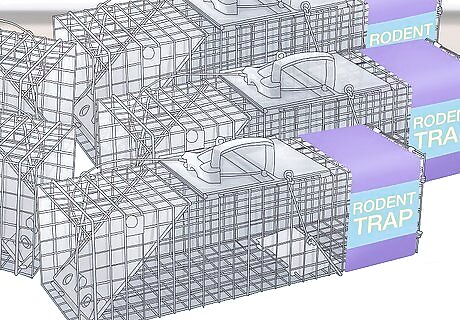
Decide on what trap to buy. Small rodent traps can be bought online, or at your local hardware store. They come in two basic types, 1-door and 2-door. 1-Door traps are simpler and afford for better bait placement, but 2-door traps have a higher catch rate due to the fact that the animal can see through both sides and enter through either.
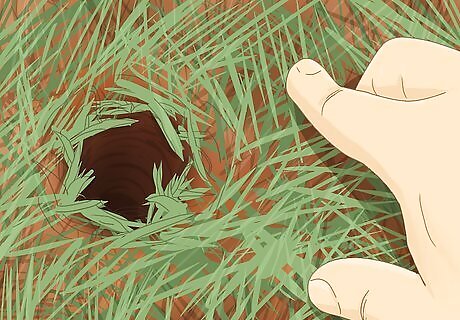
Locate your trapping spot. Locate your trapping spot. Look for signs of chipmunk around your property. See if you can find a chipmunk hole. If you have a patio you should look on the border of it. If you have a deck, you should check under it. If you can't find any signs of chipmunks, this method works just as well on squirrels.
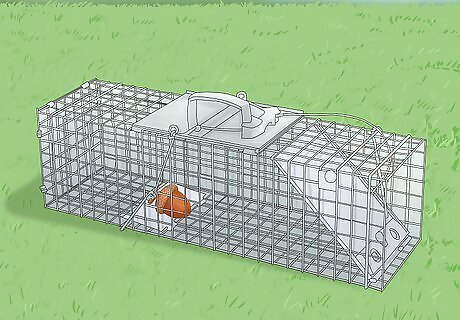
Place your bait. You'll need to use a bait that the chipmunks can't steal without going into the trap. Peanut butter works well, as does any sort of nut that is larger than the holes in the mesh of the trap. Place the bait on the trigger inside the trap, either at the opposite end of the door on a 1-door trap or in the middle of a 2-door trap.
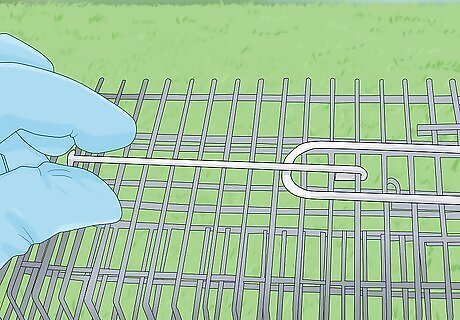
Set your trap. The trap you bought will have come with its own instructions on how to properly set it. It usually involves the careful balancing of rods and locks. After you've set your trap, you'll want to test it by lightly pressing on the trigger plate. If it doesn't go off, consult the instructions and try again. After your trap is set, avoid walking close to the trap or disturbing it in any way, as many traps can be quite sensitive.
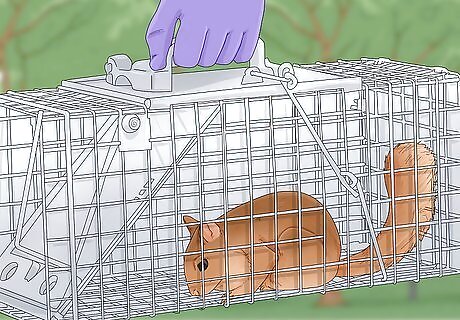
Catch a chipmunk. Check your trap often and regularly. Once you've caught a chipmunk. Handle the trap with care. Wear gloves to avoid being bitten through the mesh. Check your local laws before releasing your chipmunk outside of your property. After releasing the chipmunk, disinfect the trap before using it again. Use a disinfectant spray and a cloth to clean the trap.
Using a Bucket Trap
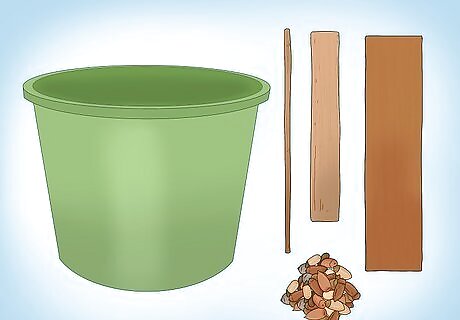
Gather your materials. For a bucket trap, you'll need a large plastic bucket, something that will work as a ramp, a flat piece of wood that will work as a trigger, and a thin stick to hold the trigger. You'll also need some bait, such as birdseed. For the ramp, find something long, flat, and sturdy, like a piece of wood. Something around one to two feet long will work. For the trigger, you'll need a piece of wood no longer than the diameter of the bucket.
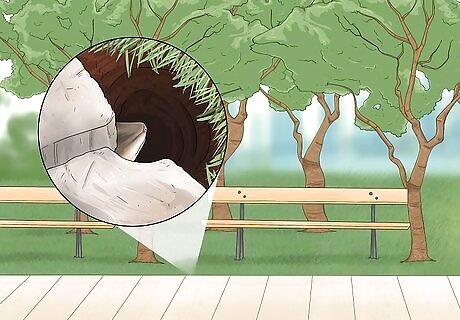
Locate your trapping spot. Locate your trapping spot. Look for signs of chipmunk around your property. See if you can find a chipmunk hole. If you have a patio you should look on the border of it. If you have a deck, you should check under it. If you can't find any signs of chipmunks, this method works just as well on squirrels. You'll want to place your bucket in the area around the chipmunk hole, or the area where you've seen chipmunks.
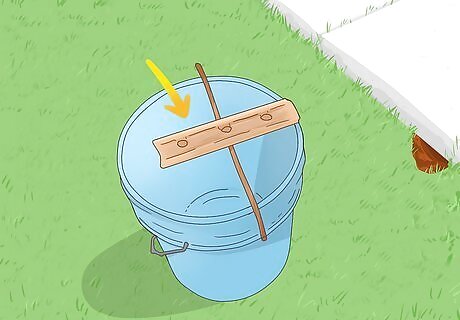
Set up the trigger. Place the stick across the top of the bucket. Then place the trigger on the bucket, with one end resting on the edge of the bucket, and the other end hanging over the stick in the middle. Then, adjust the stick and trigger so that the slightest amount of pressure on the end of the trigger will cause it to tip over. It's okay if it's not perfectly balanced. Just use your best judgment to determine whether the weight of a chipmunk on the unsecured end of the trigger will cause the trigger to tip over.
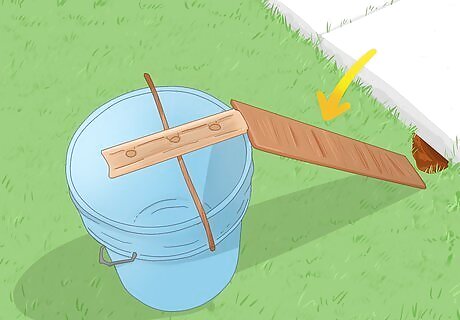
Place the ramp. Take the longer piece of wood or other material you're using as a ramp and lay it so that one end rests on the bucket, near the top. It should sit on one of the outer lips of the bucket, as close to the trigger as possible without disturbing the trigger.
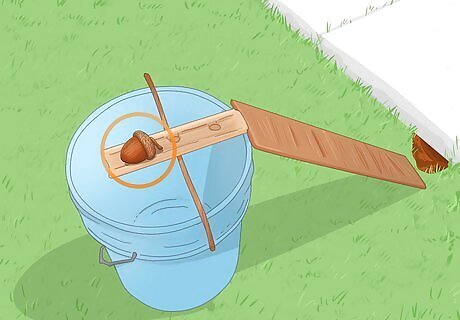
Place the bait and then wait. Put some of your bait at the entrance of the ramp, and even more bait on the unstable end of the trigger. You may need to adjust the trigger and the stick more if the bait causes the trigger to tip over. Then all you have to do is wait for a chipmunk to fall for your trap. Check it regularly throughout the day. Optionally, you can place a trail of bait up the ramp as well. Use peanut butter to make the bait stick to the ramp without sliding down.
Catching Chipmunks In a Hole
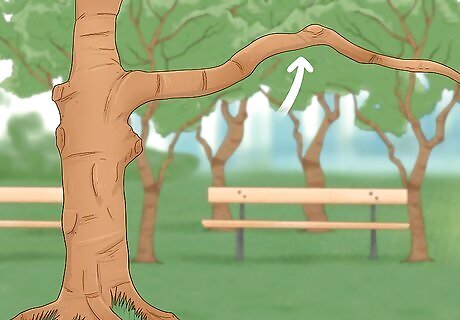
Locate your trapping spot. Look for signs of chipmunk around your property. See if you can find a chipmunk hole. If you have a patio you should look on the border of it. If you have a deck, you should check under it. If you can't find any signs of chipmunks, this method works just as well on squirrels. Find a spot free from grass and under a tree. The tree needs to have a branch that's at least somewhat horizontal and close enough to hang something from it.
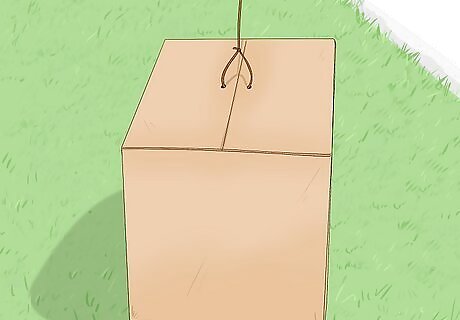
Prepare the box. Find a box at least 12in x 12in. Cut all closing flaps off with scissors. Cut two holes in the center of the top of the box about 2in apart. Then get a long piece of weed wacker wire or twine, at least long enough to go over a low branch in the tree and still have plenty to spare. Thread it through the holes and tie a knot to about 1 1/2in above the box.
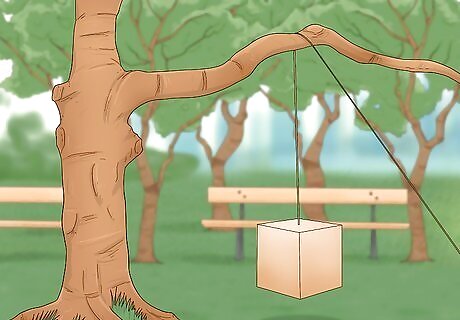
Put the trap on the tree. Move the excess string around so that when you hold it from about a foot up the string the box is decently flat. Throw the box over a tree branch that hovers over the spot free from grass. Give out 16 feet (4.9 m) more of string (still attached to the original piece) starting from where it's touching the tree branch.

Prepare the other end of the trap. Go to the spot where the very tip of the string is. Tie the string to a medium-sized, thick stick. You need to tie enough of the string so that the box hovers at least a foot above the ground. Drive the stick into the ground.
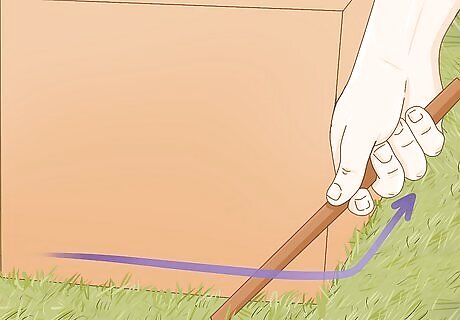
Mark where you'll make the hole. Release the stick from the ground thus letting the box fall. Mark where the box fell. You can do this by tracing a slight indention in the dirt with a stick.
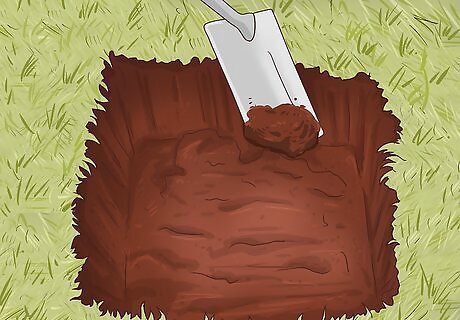
Dig the hole. Pull the box back up and drive the stick back in to secure it. Inside the border of where the box fell, dig a hole 7in deep. Make sure it's to the shape of the box. Place the box over the hole to make sure it's the same size. Then pull the box back up and dig an extra inch each way so the box falls in when you lower it. Keep testing your trap and enlarging the hole until the box falls straight in every time you release the stick.

Prepare the bait and then wait. Fill the bottom with about 3in of some kind of seed like pumpkin seeds or sunflower seeds. Wait patiently and quietly for a chipmunk to come jump in the trap to have a feast. Then release the box. What will happen is he will probably try to jump out of the hole and escape, but because of all the bird food under him, he won't be able to jump because there is no support, and he'll be trapped.
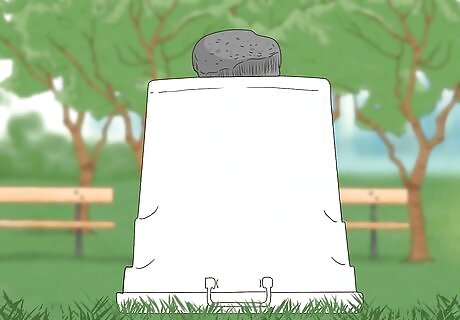
Secure the trap. Chipmunks can chew through cardboard, so if you don't want it to escape the trap, you'll need an extra layer of protection. Get a large plastic box, one large enough to fit over the hole. Place it over the hole and place rocks or books on top of it to secure it.



















Comments
0 comment